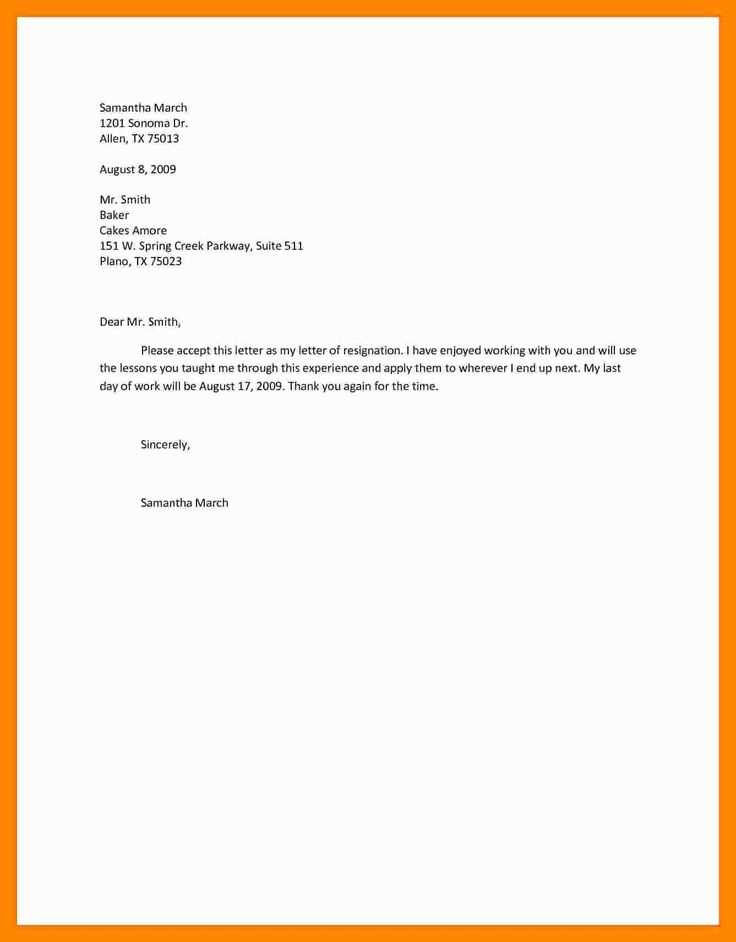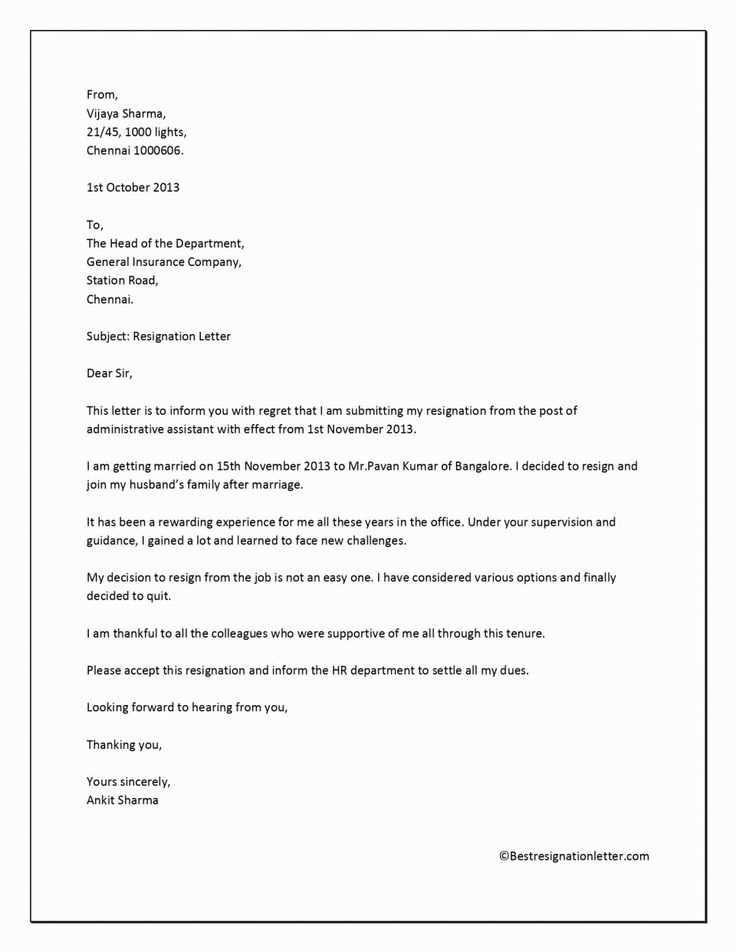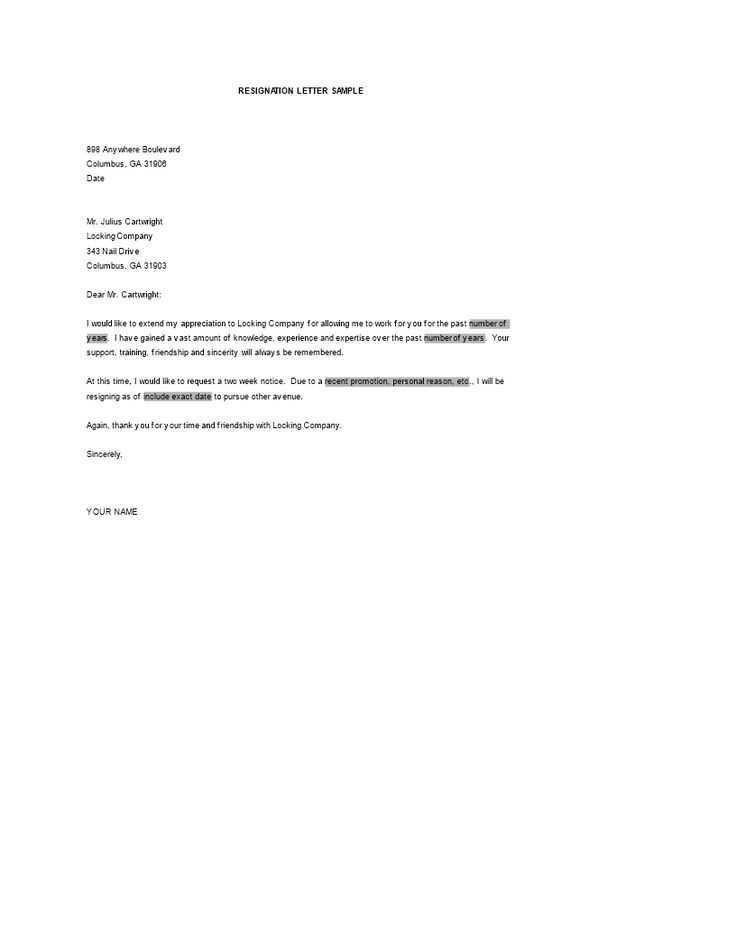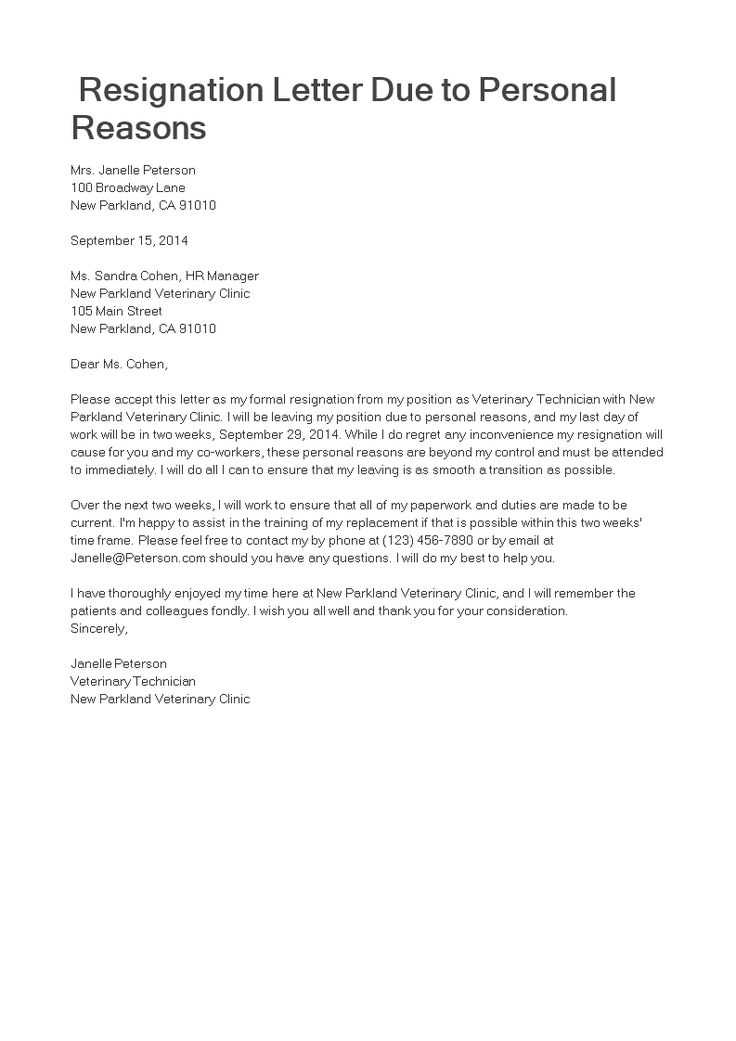Personal reason resignation letter template

When you decide to leave a job for personal reasons, writing a resignation letter is an important step to ensure you leave on good terms. A well-crafted letter helps maintain professionalism and clarity, even when personal circumstances dictate your decision. Use the template below to guide you in expressing your thoughts clearly and respectfully.
Tip: Keep your tone polite and to the point. There’s no need to go into detail about your personal reasons–focus on gratitude and professionalism.
Here’s a basic template to follow:
Subject: Resignation Letter – [Your Name]
Dear [Manager’s Name],
I am writing to formally resign from my position as [Your Job Title] at [Company Name], effective [Last Working Day, typically two weeks from the date of the letter]. Due to personal reasons, I have made the difficult decision to step away from my role.
I want to express my gratitude for the opportunity to work with such a talented team and for all the support I’ve received during my time at [Company Name]. I’ve gained valuable experience and will always look back on my time here fondly.
Thank you for your understanding, and please let me know how I can assist in making the transition process smooth.
Sincerely,
[Your Name]
Here’s the revised version:
Begin by stating your decision to resign clearly and respectfully. Express your appreciation for the opportunity and time spent with the company. Keep the tone positive and professional, even if your reasons for leaving are personal or challenging.
Key points to include:

– Mention your last working day to provide clarity on the timeline. This helps the employer plan for a smooth transition.
– Keep it brief and to the point. Avoid going into unnecessary detail about personal reasons or grievances.
Sample resignation letter:
“Dear [Manager’s Name],
I am writing to formally resign from my position at [Company Name], effective [last working day]. This was not an easy decision, but after careful consideration, I have decided to pursue other opportunities. I appreciate all the support and opportunities I have received during my time here. Please let me know how I can help during the transition period.”
End on a positive note, offering to assist in the transition and expressing your gratitude once again.
- Personal Reason Resignation Letter Template
When resigning for personal reasons, it is essential to keep your letter professional, brief, and respectful. Here’s how to structure your resignation letter clearly and effectively:
1. Begin with a formal opening
Start by addressing your manager or supervisor with the appropriate title. Use a formal salutation such as “Dear [Supervisor’s Name].”
2. State your intention to resign
Be direct in your resignation statement. Mention your decision clearly and the date you plan to leave the company. For example:
"I am writing to formally resign from my position as [Job Title], effective [Resignation Date]."
3. Provide a brief explanation (optional)
While you are not obligated to explain the personal reasons behind your resignation, you may choose to do so briefly. Keep it general and focus on the personal nature of the decision:
"Due to personal reasons, I have decided to step away from my role."
4. Express gratitude
Acknowledge the opportunities you’ve had while working with the company. This will help leave a positive impression. For example:
"I would like to express my gratitude for the opportunities and support during my time at [Company Name]."
5. Offer assistance with transition
It is courteous to offer help with the transition process. This could involve training a replacement or wrapping up current projects:
"I am happy to assist in the transition process to ensure a smooth handover of my responsibilities."
6. Close on a positive note
Conclude your letter with a positive and respectful closing statement, followed by a sign-off:
"Thank you again for the opportunity to be part of the team. I wish [Company Name] continued success in the future." Sincerely, [Your Name]
By following these steps, you can create a professional and respectful resignation letter while maintaining a positive relationship with your employer.
Begin your resignation letter by clearly stating your intent to resign. A direct approach makes your message clear from the start. For example, “I am writing to formally resign from my position as [Job Title] at [Company Name], effective [Date].” This establishes the purpose of your letter immediately and avoids any confusion.
Be Brief but Clear
Avoid lengthy explanations. Focus on providing the necessary details–such as your resignation date–while keeping the tone respectful and professional. If you’re resigning due to personal reasons, you don’t need to go into specific details unless you feel comfortable sharing. A simple “due to personal circumstances” is enough.
Express Gratitude

In the next part of your letter, express appreciation for the opportunities you’ve had while working with the company. A brief sentence like “I have truly valued my time here and appreciate the support and opportunities provided to me” will maintain a positive tone, even if your reasons for resigning are personal.
Begin with a clear statement of resignation, specifying your decision to leave. Use simple, direct language like “I am resigning from my position as [Job Title], effective [Last Working Day].” This ensures there’s no ambiguity about your intent.
Reason for Leaving
While it’s not necessary to go into detail, providing a brief reason for your departure adds clarity. Keep it positive and professional, such as “I have decided to pursue new opportunities” or “I am relocating due to personal reasons.”
Gratitude and Acknowledgement
Express appreciation for the opportunity you had at the company. Mention specific aspects you valued, such as learning experiences or teamwork. A simple “I appreciate the support and the opportunities for growth during my time here” is sufficient.
End by offering assistance with the transition, like training your replacement or helping with handover tasks. This shows professionalism and a willingness to leave on good terms.
Be direct, but keep it concise. Clearly state the reason for leaving without over-explaining. Avoid sounding negative or placing blame. Instead, focus on your personal needs or goals.
- For a career change: “I am seeking new challenges to align with my long-term career goals.”
- If relocating: “I am relocating to a new area, which makes commuting to my current position difficult.”
- For personal reasons: “I have personal commitments that require my full attention at this time.”
- If pursuing further education: “I am returning to school to pursue advanced studies in [subject].”
- If health-related: “Due to health reasons, I must step back from my current position to focus on recovery.”
Remember to keep the tone respectful and professional. It’s fine to keep it brief without providing excessive details. If you’re uncomfortable sharing specifics, you can always say, “For personal reasons,” as long as it doesn’t feel evasive.
Keep your language clear and respectful. Avoid being overly detailed about personal reasons; focus on the fact that your decision is based on personal matters without going into specifics. A brief acknowledgment that these matters require your full attention is enough.
Stay Objective and Brief
In your resignation letter, stick to the facts. State your resignation clearly, specifying the date of your last working day. Acknowledge the positive aspects of your role and express appreciation for the opportunities you’ve had. Keep any emotional language or complaints out of the message.
Focus on Appreciation
Make sure to express gratitude for your time with the company. Even if your personal reasons for leaving are difficult, keep the tone optimistic and appreciative. Highlight how the experience has contributed to your growth and how much you value the relationships you’ve built during your tenure.
By keeping your message focused, concise, and positive, you maintain a professional tone while ensuring your personal situation is respected.
Offer to train or guide the person taking over your responsibilities. You can schedule a few sessions to go over key tasks and provide a smooth handover. Make sure to outline specific processes, tools, and any ongoing projects that need attention.
Create Documentation for the Transition
Prepare detailed documentation that explains your daily tasks, project timelines, and any challenges you encountered. This will give your successor a reference guide to rely on. Focus on clarity and practicality, highlighting any common issues and their solutions.
Be Available for Follow-Up Questions

Even after your departure, let your employer know you’re open to answering questions. Make it clear when you’re available and how they can reach you. This shows you’re invested in the transition and are willing to help beyond your last day.
Submit your personal resignation letter at least two weeks before your intended departure date. This gives your employer time to make necessary adjustments or find a replacement. Make sure to submit it during business hours, preferably early in the week, so there’s ample time to discuss any details or next steps.
Choosing the Right Timing
Avoid submitting your resignation letter during stressful periods, such as just before a major project deadline or a company event. Consider submitting it when your work is in a manageable phase, ensuring a smoother transition for both you and your employer. Aim to submit your letter on a Monday morning to allow for immediate conversation with your manager.
How to Submit Your Resignation Letter
Deliver your resignation letter in person if possible. This shows respect for your employer and allows for an open conversation. If this isn’t feasible, sending it via email is a professional alternative. Ensure your letter is clear and concise, outlining your departure date and expressing gratitude for the opportunity.
| Method | Advantages | Disadvantages |
|---|---|---|
| In Person | Allows for direct communication and feedback. | May cause discomfort in a face-to-face conversation. |
| Provides a written record of your resignation. | Lacks the personal touch of an in-person conversation. |
When resigning for personal reasons, it’s important to keep the tone of your letter professional while being respectful. Start with a clear statement of your intent to resign, followed by the date you plan to leave. Keep the reason for leaving brief, as you don’t need to go into personal details. Focus on gratitude for the opportunities you’ve had and offer to assist with the transition. Be polite and concise, avoiding any negative language about the company or coworkers.
Step-by-step breakdown:
1. State your resignation clearly.
2. Mention your final working day.
3. Include a brief mention of personal reasons without going into specifics.
4. Express gratitude for the time spent at the company.
5. Offer to help with a smooth handover or transition.
6. Close with polite, professional regards.